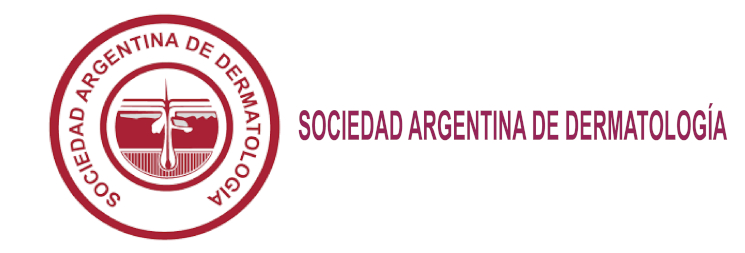Síndrome de Sézary
Etiopatogenia, epidemiología, clínica, diagnóstico y pronóstico
DOI:
https://doi.org/10.47196/da.v26i1.2059Palabras clave:
Síndrome de Sézary, Linfoma cutáneo de células TResumen
El síndrome de Sézary (SS) es una rara y agresiva variante leucémica del linfoma cutáneo de células T, de pronóstico ominoso. Se caracteriza por presentar la tríada: eritrodermia, linfadenopatías y linfocitos T neoplásicos circulantes.
El diagnóstico está dado por la clínica, el estudio histopatológico, la citometría de flujo y el reordenamiento genético del receptor del linfocito T.
En esta revisión se analizan la presentación clínica, la histopatología, el diagnóstico y el pronóstico de este síndrome.
Citas
I. Willemze R, Jaffe ES, Burg G, Cerroni L, et ál.WHO-EORTC classification for cutaneous lymphomas. Blood 2005;105:3768-3785.
II. Bagot M, Ortonne N. Linfomas cutáneos: clasificación. EMC-Dermatología 2013;47:1-6.
III. Ram- Wolff C. Linfomas T cutáneos de tipo micosis fungoide/síndrome de Sézary (incluida parapsoriasis). EMC-Dermatología 2014;48:1-12.
IV. Berg S, Villasenor-Park, Haun P, Kim E. Multidisciplinary management of Mycosis Fungoides/Sézary syndrome. CurrHematol Malig Rep 2017;12:234-243.
V. Trautinger F, Eder J, Assaf C, Bagot M, et ál. European Organisation for Research and Treatment of Cancer consensus recommendations for the treatment of mycosis fungoides/Sézary syndrome – Update 2017. Eur J Cancer 2017;77:57-74.
VI. Olsen E, Vonderheid E, Pimpinelli N, Willemze R, et ál. Revisions to the staging and classification of mycosis fungoides and Sézary syndrome: a proposal of the International Society for Cutaneous Lymphomas (ISCL) and the cutaneous lymphoma task force of the European Organization ofResearch and Treatment of Cancer (EORTC). Blood2007;110:1713-1722.
VII. Abeldaño A, Enz P, Maskin M, Cervini B, et ál. Primary cutaneous lymphoma in Argentina:analysis of 416 cases of the primary cutaneous lymphoma network. Cutaneous Lymphoma Argentine Group. Poster presentacion. 3o World Congress of Cutaneous Lympohma. New York: October, 26-28/10/16.
VIII. Jawed SI, Myskowski PL, Horwitz S, Moskowitz A, et ál. Primary cutaneous T-cell lymphoma (mycosis fungoides andSézary syndrome): Part II. prognosis, management, and futuredirections. J Am Acad Dermatol 2014;70:223e1-223e17.
IX. Trautinger F, Knobler R,Willemze R, Peris K, et ál. EORTC consensus recommendations for the treatment of mycosis fungoides/Sézary syndrome. Eur J Cancer Oxf2006;42:1014-030.
X. Taswell H, Winkelmann RK. Sézary Syndrome- A malignant Reticulemic Erythroderma. JAMA 1961;177:465-472.
XI. Gómez Díez S, Pérez Oliva N. Micosis fungoide y síndrome de Sézary. Actas Dermosifiliogr 2001;92:193-206.
XII. Molgó M, Reyes-Baraona. Actualización en diagnóstico y manejo de micosis fungoide y síndrome de Sézary. RevChilena Dermatol 2015;31:338-353.
XIII. Jawed SI, Myskowski PL, Horwitz S, Moskowitz A, et ál. Primary cutaneous T-cell lymphoma (mycosis fungoides and Sézary syndrome): Part I diagnosis: Clinical and histopathologic features and new molecular and biologic markers. J Am Acad Dermatol 2014;70:205e1-205e16.
XIV. Narváez Rosales V, Ponce Olivera RM. La célula de Sézary: su evolución como concepto y como criterio diagnóstico en los linfomas cutáneos. Dermatología CMQ 2006:4:105-108.
XV. Iżykowska K,Przybylski G, Gand C, Braun F, et ál. Genetic rearrangements result in altered gene expression and novel fusion transcripts in Sézary syndrome. Oncotarget 2017;8:39627-39639.
XVI. Boonk S, Çetinözman F, Vermeer MH, Jansen PM, et ál. Differential expression of TOX by skin-infiltrating T cells in Sézary syndrome and erythrodermic dermatitis. J Cutan Pathol 2015;42:604-609.
XVII. Prasad A, Rabionet R, Espinet B, Zapata L, et ál. Identification of gene mutations and fusion genes in patients with Sézary Syndrome. J Invest Dermatol 2016;136:1490-1499.
XVIII. Gros A, Laharanne E, Vergier M, Prochazkova-Carlotti M, et ál. TP53 alterations in primary and secondary Sézary syndrome: A diagnostic tool for the assessment of malignancy in patients with erythroderma. Plos One 2017;12:1-15.
XIX. Olsen EA, Whittaker S, Kim YH, Duvic M, et ál. Clinical end points and response criteria in mycosis fungoides and Sézary syndrome: a consensus statement of the International Society for Cutaneous Lymphomas, the United States Cutaneous Lymphoma Consortium, and the Cutaneous Lymphoma Task Force of the European Organisation for Research and Treatment of Cancer. J Clin Oncol 2011;29:2598-2607.
XX. Juárez Navarrete L, Rincón Pérez. Linfomas cutáneos: fisiopatología y clasificación (1.aparte). DermatologíaRev Mex 2005;49:109-122.
XXI. Olsen EA, Rook AH, Zic J, Kim Y et ál. Sézary syndrome: immunopathogenesis, literature review of therapeutic options, and recommendations for therapy by the United States Cutaneous Lymphoma Consortium (USCLC). J Am Acad Dermatol 2011;64:352-404.
XXII. Wong H, Mishra A, Hake T, Porcu P. Evolving Insights in the pathogenesis and Therapy of Cutaneous T-cell lymphoma (Mycosis Fungoides and Sézary Syndrome). Br J Haematol 2011;155:150-166.
XXIII. Diamandidou E, Cohen PR, Kurzrock R. Mycosis fungoides and Sézary syndrome. Blood1996;88:2385-2409.
XXIV. Molgó M, Jaque A, Vial V, Ocqueteau M, et ál. Fotoféresis en el tratamiento de síndrome de Sézary. Caso clínico. RevMed Chile 2015;143:1449-1458.
XXV. Consenso Linfomas Cutáneos Primarios. Actualización 2019.Sociedad de Dermatología Argentina.
XXVI. Wieselthier JS, Koh HK. Sézary syndrome: diagnosis, prognosis and critical review of treatment options. J Am Acad Dermatol. 1990; 22:381-401.
XXVII. Pinar Manzanet JM, Belló González C, González Muñoz C. Síndrome de Sézary como causa de prurito en el anciano. MEDIFAM 2001;11:64-72.
XXVIII. Mangold A, Thompson A, Davis M D, Saulite L, et ál. Early clinical manifestations of Sézary syndrome: a multicenter retrospective cohort study. J Am Acad Dermatol 2017;77: 719- 727.
XXIX. Henn A, Michel L, Fite C, Deschamps L, et ál. Sézary syndrome without erythroderma. J Am Acad Dermatol 2015;72:1003-1009.
XXX. Abel E, Lindae M, Hoppe R, Wood G. Benign and malignant forms of erythroderma: Cutaneous immunophenotypic characteristics. J Am Acad Dermatol 1988;19:1089-1095.
XXXI. Sentis HJ, Willemze, Scheffer E. Histopathologic studies in Sézary syndrome and erythrodermicmycosis fungoides: a comparison with benign forms of erythroderma. J Am Acad Dermatol 1986;15:1217-1226.
XXXII. Willemze R, Hodak E, Zinzani PL, Specht L, et ál. Primary cutaneous lymphomas: ESMO clinical practice guidelines for diagnosis, treatment and follow-up. Ann Oncol 2013; 24:149-154.
XXXIII. Buechner SA, Winkelmann RK: Sézary syndrome. A clinicopathologic study of 39 cases. Arch Dermatol 1983;119:979-986.
XXXIV. Kirsch IR, Watanabe R, O’Malley JT, Williamson DW, et ál. TCR sequencing facilitates diagnosis and identifies mature T cells as the cell of origin in CTCL. Sci Transl Med 2015;7:308ra158.
XXXV. Scarisbrick JJ, Prince HM, Vermeer MH, Quaglino P, et ál. Cutaneous Lymphoma International Consortium study of outcome in advanced stages of mycosis fungoides and Sézary syndrome: effect of specific prognostic markers on survival and development of a prognostic model. J Clin Oncol 2015;33:3766-3773.
XXXVI. Talpur R, Singh L, Daulat S, Liu P,et ál. Long-term outcomes of 1.263 patients with mycosis fungoides and Sézary Syndrome from 1982 to 2009. Clin Cancer Res 2012;18:5051-5060.
Descargas
Publicado
Número
Sección
Licencia
El/los autor/es tranfieren todos los derechos de autor del manuscrito arriba mencionado a Dermatología Argentina en el caso de que el trabajo sea publicado. El/los autor/es declaran que el artículo es original, que no infringe ningún derecho de propiedad intelectual u otros derechos de terceros, que no se encuentra bajo consideración de otra revista y que no ha sido previamente publicado.
Le solicitamos haga click aquí para imprimir, firmar y enviar por correo postal la transferencia de los derechos de autor













